Ever wonder why you walk into the grocery store for “just a few items” but leave with a cart full of unplanned purchases? It’s not just your lack of willpower. Supermarkets are carefully designed psychological battlegrounds where every detail—from the layout to the lighting to the background music—is strategically planned to maximize your spending. Understanding these supermarket shopping secrets can help you save money and shop smarter. Let’s pull back the curtain on 15 things your grocery store doesn’t want you to know.
1. Those end-of-aisle items on sale are probably not saving you much money
Those eye-catching displays at the ends of aisles (known in the industry as “endcaps”) are prime real estate in the supermarket world. Manufacturers actually pay extra for their products to be placed there, which is why these spots often feature name-brand items rather than the best deals.
While the items may technically be “on sale,” they’re rarely the best value in the store. A 2021 consumer study found that endcap items were, on average, 23% more expensive than similar products found in their regular aisle locations.
How to outsmart this tactic:
- Always compare the unit price (price per ounce, pound, etc.) of endcap items with similar products in the regular aisle
- Don’t assume that a brightly colored “sale” sign means you’re getting the best deal
- Consider store brands, which are often significantly cheaper than name brands, even when the latter are “on sale”
If you’re serious about price comparison, consider using a grocery price comparison app that can help you quickly determine if you’re really getting a good deal.
2. You go in with a grocery list, but your supermarket works hard to get you to deviate from it
A 2023 Slickdeals survey found that the average American spends $314 per month on impulse purchases, with food items being the most common category. Grocery stores capitalize on this by creating “disruption zones” that break your shopping rhythm and force you to notice new products.
How to outsmart this tactic:
- Eat before shopping—studies show hungry shoppers spend 17% more
- Stick rigidly to your shopping list
- Consider online grocery ordering for pickup to eliminate impulse buys entirely
- Set a timer on your phone—the longer you spend in the store, the more you’re likely to buy
To make list-making easier, try using a grocery list organizer that can be categorized by store section, helping you shop more efficiently and avoid wandering through tempting aisles.
3. The best deals? They’re often not at eye level
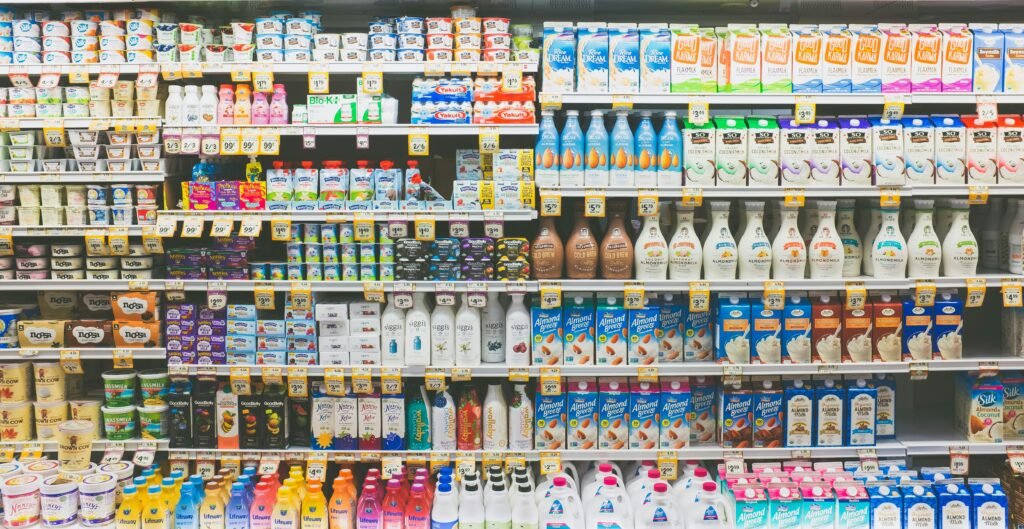
In the grocery business, there’s a saying: “Eye level is buy level.” Supermarkets place their most profitable items—usually name brands with higher margins—right at eye level where you’re most likely to see and grab them. Meanwhile, better deals and store brands are often relegated to the bottom or top shelves.
This strategic shelving, known as “planogramming,” is so effective that manufacturers pay significant “slotting fees” to secure prime eye-level positions. One industry study found that products placed at eye level sell 35% more than identical products placed on lower shelves.
How to outsmart this tactic:
- Make a habit of scanning the entire shelf, from top to bottom
- Look specifically at the bottom shelves for better deals
- Compare unit prices rather than package prices
- Be aware that children’s products are often placed at their eye level—about three feet off the ground
Remember that store brands (also called private label products) are often manufactured in the same facilities as name brands but cost 20-30% less. Don’t let shelf placement bias your perception of quality.
4. That loyalty program comes with a hidden agenda
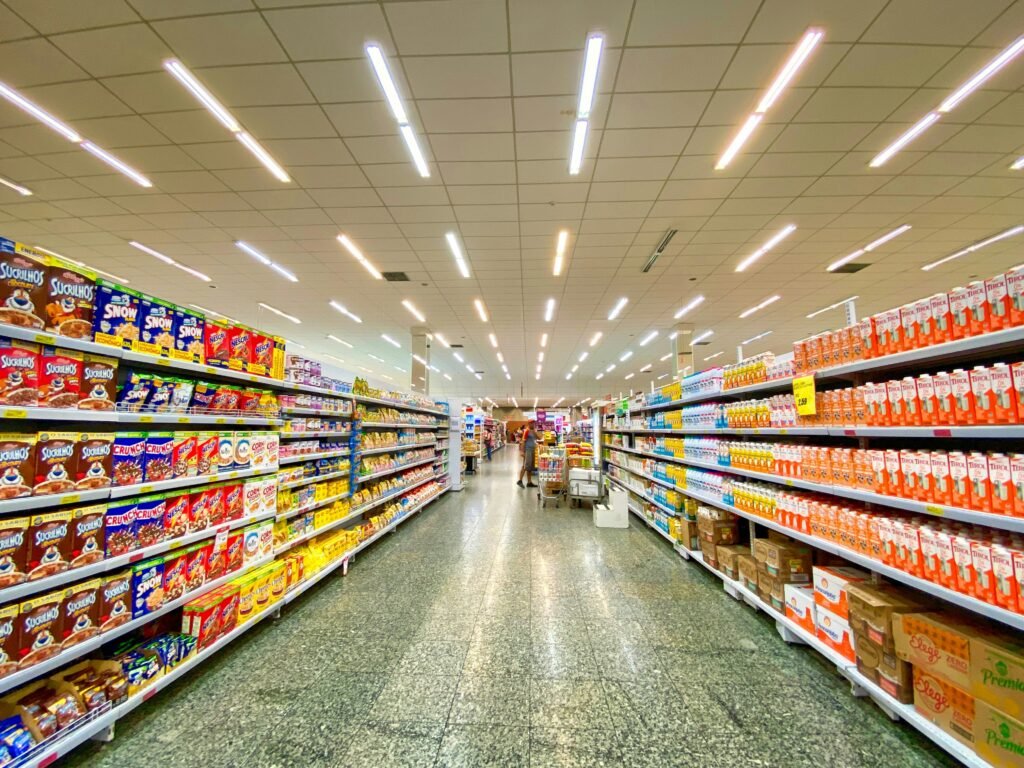
Loyalty programs seem like a win-win: you get discounts, and the store gets your repeat business. But there’s much more happening behind the scenes. Every time you swipe that loyalty card, you’re giving the store valuable data about your shopping habits, preferences, and patterns.
Supermarkets use this information to create detailed customer profiles that help them target you with personalized marketing. They know what you buy, when you buy it, and how much you’re willing to pay. Some programs even track your online browsing habits and combine that data with your in-store purchases.
How to outsmart this tactic:
- Use a secondary email address for loyalty programs to limit marketing
- Be aware that “special offers” are often designed to get you to try higher-margin products
- Consider using different loyalty accounts for different types of purchases if privacy is a concern
- Read the privacy policy to understand how your data is being used and shared
That said, loyalty programs can offer genuine savings if used strategically. Just be conscious of the trade-off: you’re exchanging personal data for discounts.
5. Supermarkets are not always the best place to buy nonfood items
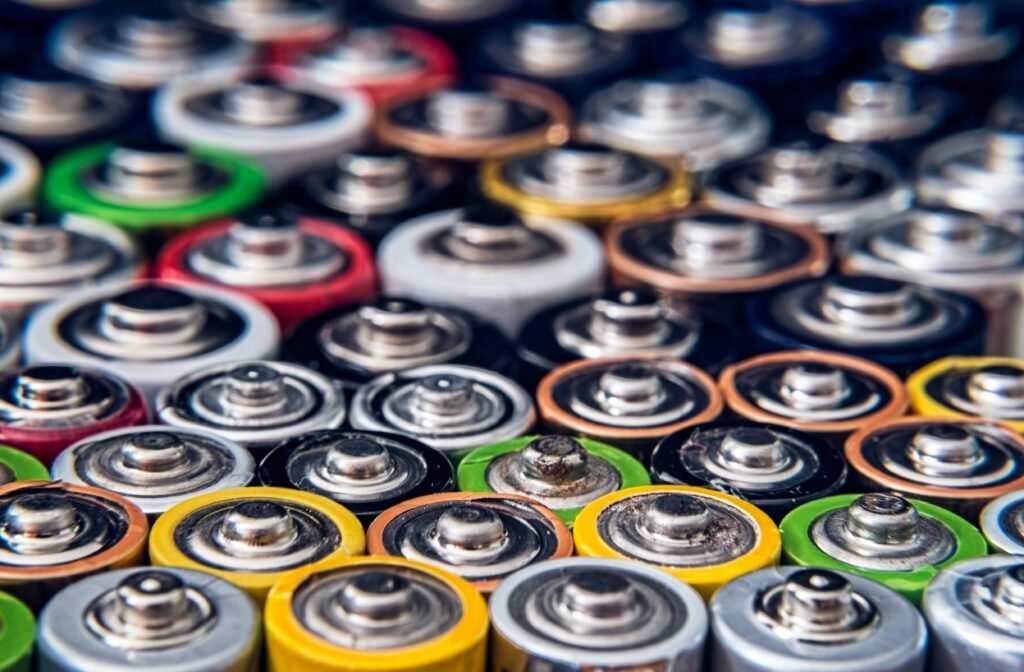
That convenient display of kitchen gadgets, batteries, or greeting cards might save you a trip to another store, but it’ll cost you. Nonfood items at supermarkets typically carry a markup of 20-40% compared to big-box stores or online retailers.
Why? Supermarkets often don’t source these products directly from manufacturers. Instead, they buy through distributors who add their own markup. Additionally, these items aren’t “traffic drivers” (products that bring people to the store), so supermarkets feel free to maximize their profit margins.
How to outsmart this tactic:
- Save your nonfood purchases for big-box stores like Target or Walmart
- Keep a separate shopping list for household items
- Compare prices using your smartphone before making impulse purchases
- Be especially wary of small appliances, batteries, and over-the-counter medications
The exception? Loss leaders—heavily discounted items designed to get you in the door. These can sometimes be good deals, but they’re the exception rather than the rule.
6. Prewashed, chopped and cut fruits and veggies cost you more
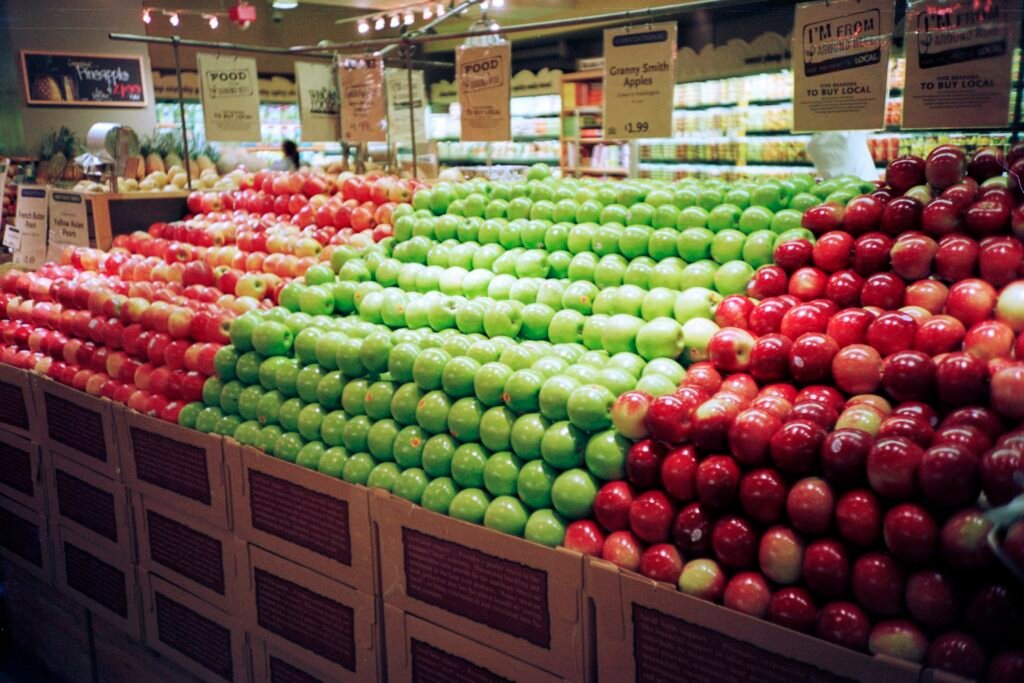
That container of pre-cut watermelon cubes might save you five minutes of preparation time, but it could cost you three times as much as buying the whole fruit. Pre-prepared produce is one of the highest-margin items in the grocery store, with markups ranging from 40% to 300%.
Beyond the price, pre-cut produce has other downsides: it typically doesn’t last as long as whole fruits and vegetables, and the cutting process can reduce nutritional value. Plus, all that extra packaging creates unnecessary waste.
How to outsmart this tactic:
- Buy whole fruits and vegetables and prep them yourself
- Set aside a specific time each week for washing and chopping produce
- Invest in good quality storage containers to keep your prepped produce fresh
- If time is truly an issue, be selective—some pre-prepped items offer better value than others
To make food prep easier and more efficient, consider investing in a quality vegetable chopper that can quickly dice and slice produce. The time savings might make the initial investment worthwhile, and you’ll still save money compared to buying pre-cut items.
7. People who use self-checkout tend to spend less
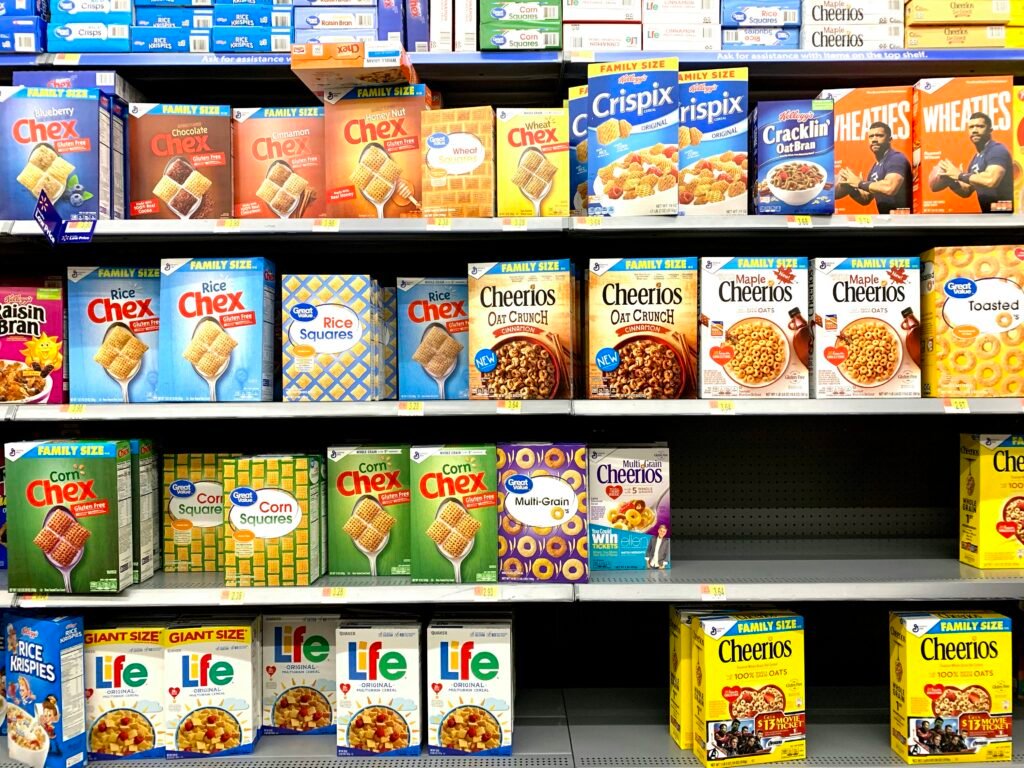
Despite the convenience for shoppers, grocery stores have a love-hate relationship with self-checkout. Why? Research shows that shoppers who use self-checkout spend less money. A study published in the Journal of Retailing found that shoppers using self-checkout lanes made 32% fewer impulse purchases for women and 17% fewer for men compared to traditional checkout lanes.
Without a cashier making small talk (and subtly delaying you while you eye the candy and magazine racks), and with the heightened awareness of scanning your own items, you’re more likely to stick to your planned purchases.
How to outsmart this tactic:
- Choose self-checkout when available, especially for smaller shopping trips
- Avoid the candy, magazine, and impulse item displays that often surround checkout areas
- If using a staffed checkout lane, unload your cart strategically, placing items you’re uncertain about last
- Consider using grocery pickup services, which eliminate checkout impulse buys entirely
Self-checkout isn’t just faster—it’s a money-saving strategy that puts you in control of your grocery budget.
8. Those free samples? They’re meant to whet your appetite
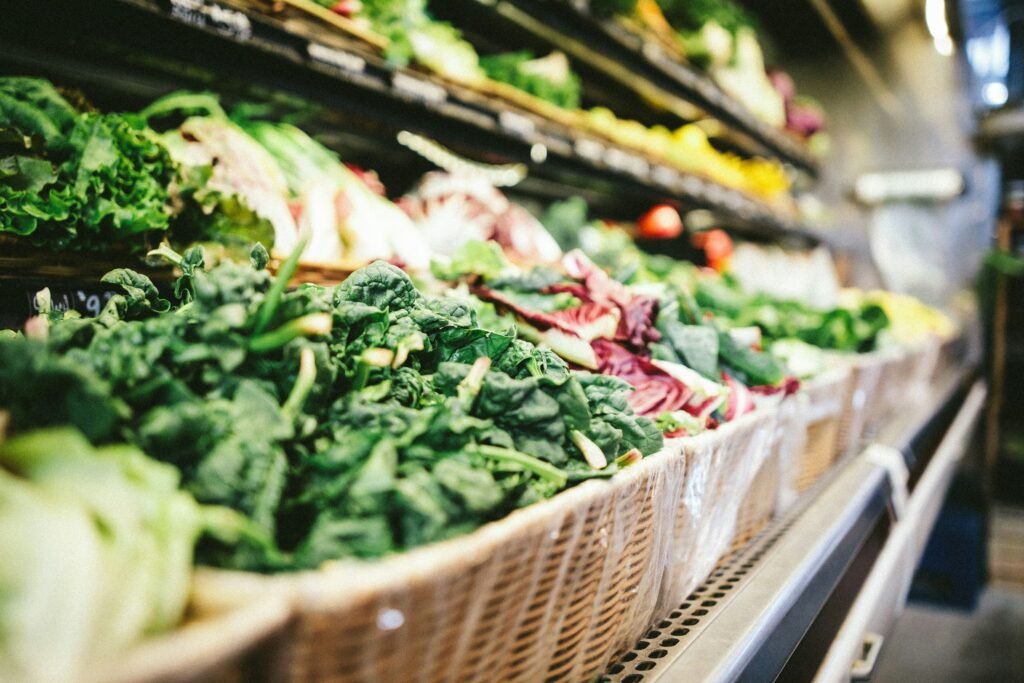
There’s no such thing as a free lunch—or a free sample. Those little cups of pasta sauce or cheese cubes aren’t just a nice gesture; they’re a calculated sales tactic. Research from the Journal of Marketing Research found that sampling can increase sales by up to 2,000% on the day of sampling.
Free samples work on multiple psychological levels: they trigger reciprocity (you feel obligated after accepting something free), reduce perceived risk (you know what it tastes like), and—perhaps most importantly—stimulate hunger. Once you start eating, your body releases hormones that increase appetite, making you more likely to purchase not just the sampled product but more food in general.
How to outsmart this tactic:
- Shop on a full stomach to reduce susceptibility to food temptations
- Decide before trying a sample whether you actually need the product
- Feel free to try samples, but don’t feel obligated to buy
- Be aware that sampling stations are strategically placed to disrupt your shopping pattern
If you find yourself particularly vulnerable to sample-induced purchases, try shopping with a grocery budget tracker that helps you stay accountable to your spending plan.
9. The background music is intentional
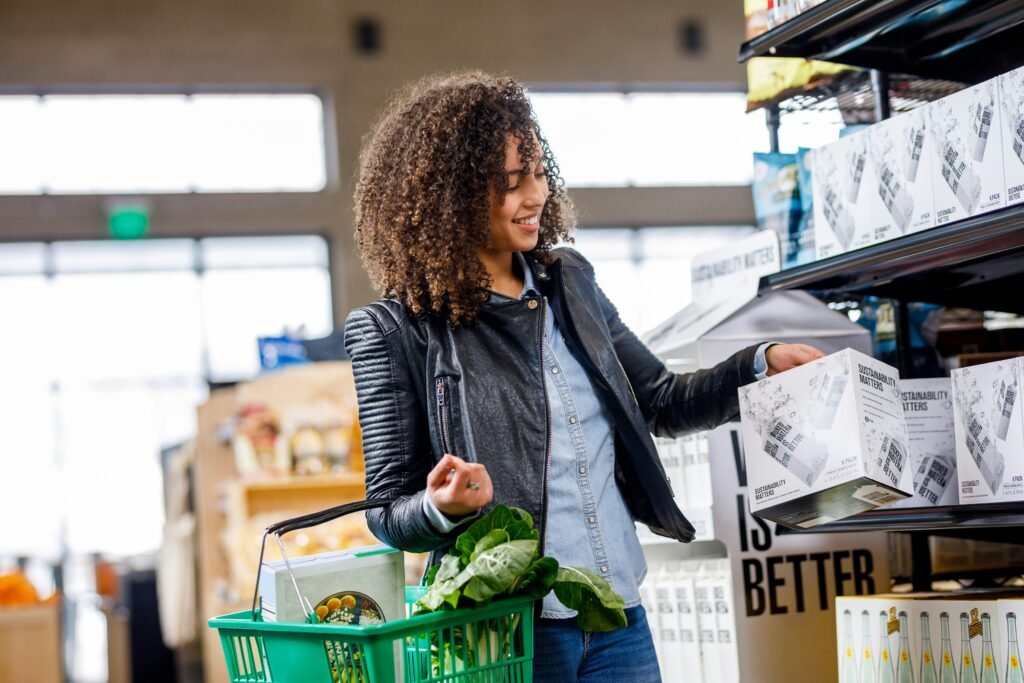
That soft, pleasant music playing in the background isn’t just for ambiance—it’s scientifically designed to influence your shopping behavior. A landmark study published in the Journal of Marketing found that slow-tempo music (under 72 beats per minute) led to a 38% increase in sales compared to fast-tempo music.
Slow music encourages shoppers to move more slowly through the store, increasing browsing time and, consequently, purchases. Different departments might even have different music: upbeat in the morning when efficiency-minded shoppers visit, slower and more relaxing during peak browsing hours.
How to outsmart this tactic:
- Bring headphones and listen to your own fast-paced playlist
- Set a timer to keep yourself aware of how long you’ve been shopping
- Shop with a specific list and route through the store
- Be conscious of how the store’s atmosphere might be affecting your pace
Some shoppers find that using a shopping timer or app helps them stay focused and move efficiently through the store, regardless of what music is playing.
10. That misting system for the fresh produce could make you pay more
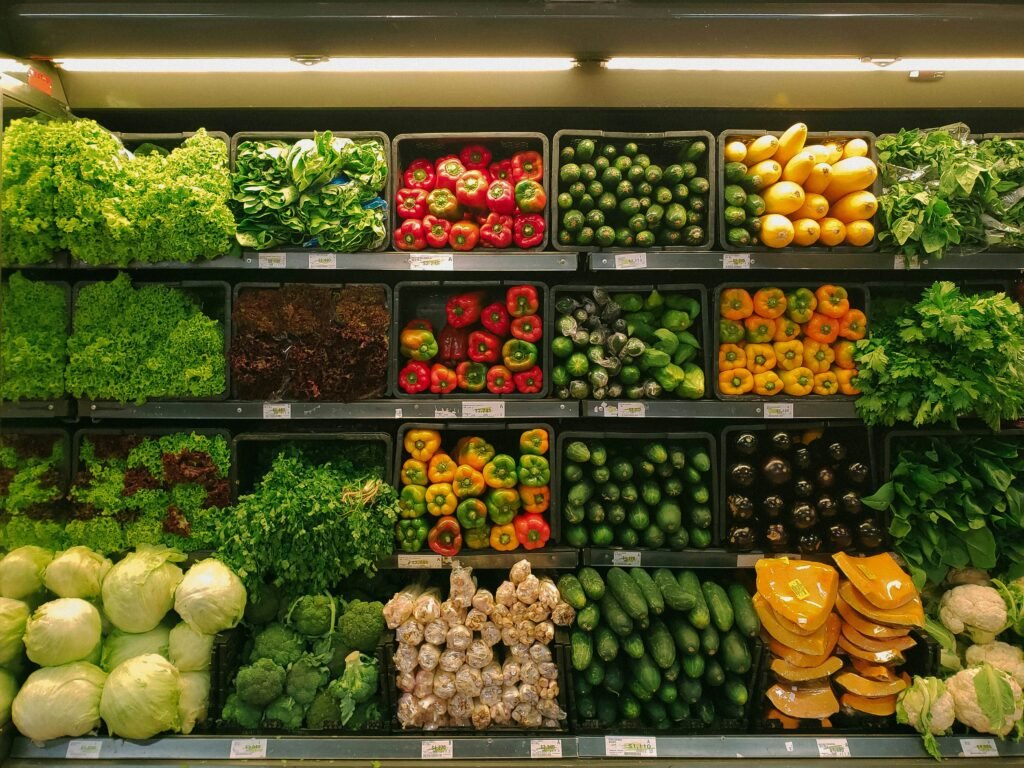
Those fine mist sprays that keep the lettuce and broccoli looking dewy and fresh serve multiple purposes—and not all of them benefit you. Yes, the mist helps keep produce from drying out, but it also adds weight to vegetables sold by the pound. Some industry insiders estimate that misting can add up to 5-10% to the weight of leafy greens.
Additionally, the glistening effect makes produce look fresher and more appealing, encouraging you to buy more. It’s a visual trick that plays on our instinctive attraction to fresh, hydrated foods.
How to outsmart this tactic:
- Give wet produce a good shake before placing it in your bag
- Use the salad spinners provided in some produce departments
- Pat items dry with paper towels available in the produce section
- Be especially vigilant with expensive per-pound items like specialty greens
For home storage, consider using specialized produce storage containers that help maintain optimal humidity levels without excess moisture, extending the life of your fruits and vegetables.
11. Grocery stores often have a discount section — but you may need to hunt for it
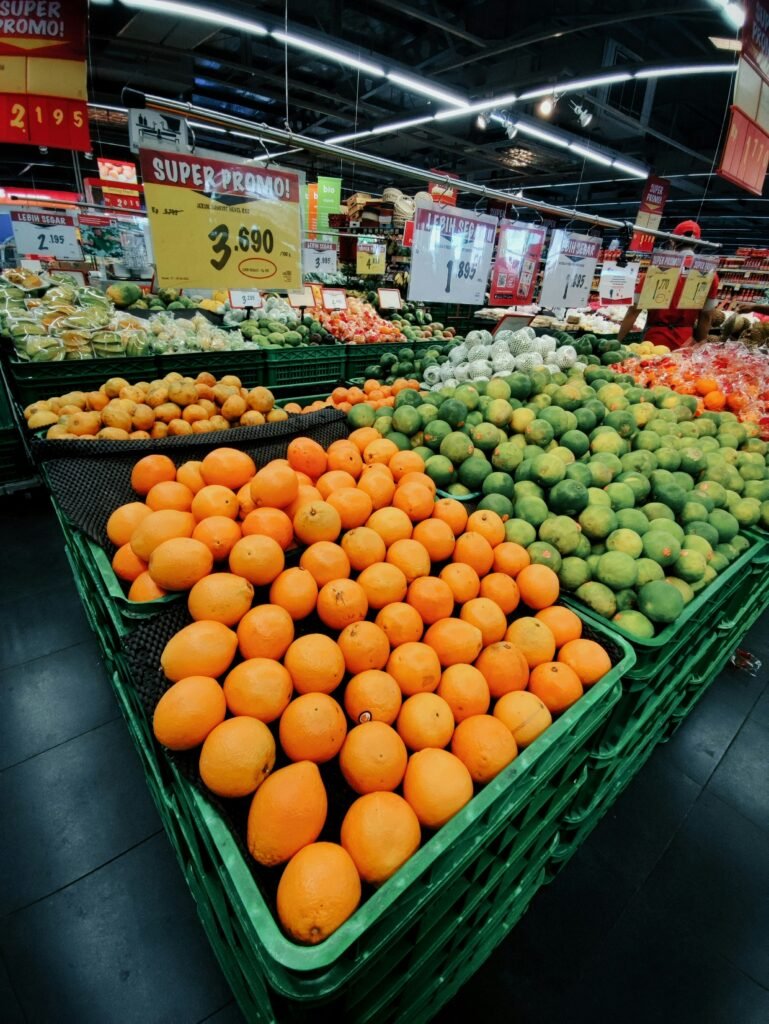
Many supermarkets have dedicated sections for discounted items—products approaching their sell-by date, seasonal items being cleared out, or packages with minor damage. These sections can offer savings of 30-70% off regular prices, but they’re rarely prominently displayed.
Grocery stores typically tuck these clearance areas in low-traffic corners of the store, away from main aisles. Why? They’d rather sell you full-price merchandise, and they don’t want to draw attention to items that might be perceived as less desirable.
How to outsmart this tactic:
- Ask employees where the clearance or discount section is located
- Check end-of-aisle spaces in less-trafficked areas of the store
- Look for sections labeled “Manager’s Specials,” “Quick Sale,” or “Reduced for Quick Sale”
- Visit the bakery department late in the day for discounted bread and baked goods
Once you find these hidden treasure troves, make them a regular stop on your shopping route. Just be sure to check expiration dates and condition before purchasing.
12. The store layout and lighting are strategically designed

Nothing in a supermarket’s layout is accidental. The typical grocery store is designed to maximize what industry experts call “exposure time”—the longer you wander, the more you’ll buy. That’s why essentials like milk, eggs, and bread are typically placed at the back of the store, forcing you to walk past hundreds of other products.
The produce section is usually near the entrance for a reason: the vibrant colors and fresh scents put you in a good mood and prime you to spend. Studies show that shoppers who begin in the produce department spend an average of 7% more overall.
How to outsmart this tactic:
- Map your route through the store based on your shopping list
- Shop the perimeter first (where most whole foods are located) before venturing into center aisles
- Be aware that stores are typically laid out counterclockwise to encourage right-handed shoppers to reach more easily
- Recognize that “store within a store” sections (like the bakery or deli) are designed to break your shopping rhythm
Some grocery stores change their layouts periodically, forcing regular shoppers to search for items and discover new products along the way. When this happens, don’t hesitate to ask employees for directions rather than wandering aimlessly.
13. Good deals are often next to not-so-good deals

Retailers use a psychological principle called “anchoring” to influence your perception of value. By placing a genuinely good deal next to a significantly more expensive item, they make the sale item seem like an even better value. This contrast effect can lead you to purchase the sale item even if you hadn’t planned to buy it at all.
Similarly, supermarkets often place their highest-margin items adjacent to popular sale items. They know that once you stop your cart to pick up the advertised special, you’re more likely to notice—and purchase—the full-priced items nearby.
How to outsmart this tactic:
- Evaluate each purchase on its own merits, not in comparison to nearby items
- Stick to your list, even when you spot what seems like a great deal
- Be especially wary of items surrounding heavily advertised specials
- Ask yourself: “Would I buy this if it weren’t next to something more expensive?”
Remember that a “good deal” on something you don’t need is still money spent unnecessarily. Focus on value for the items you actually require.
14. Bigger grocery carts = bigger bills
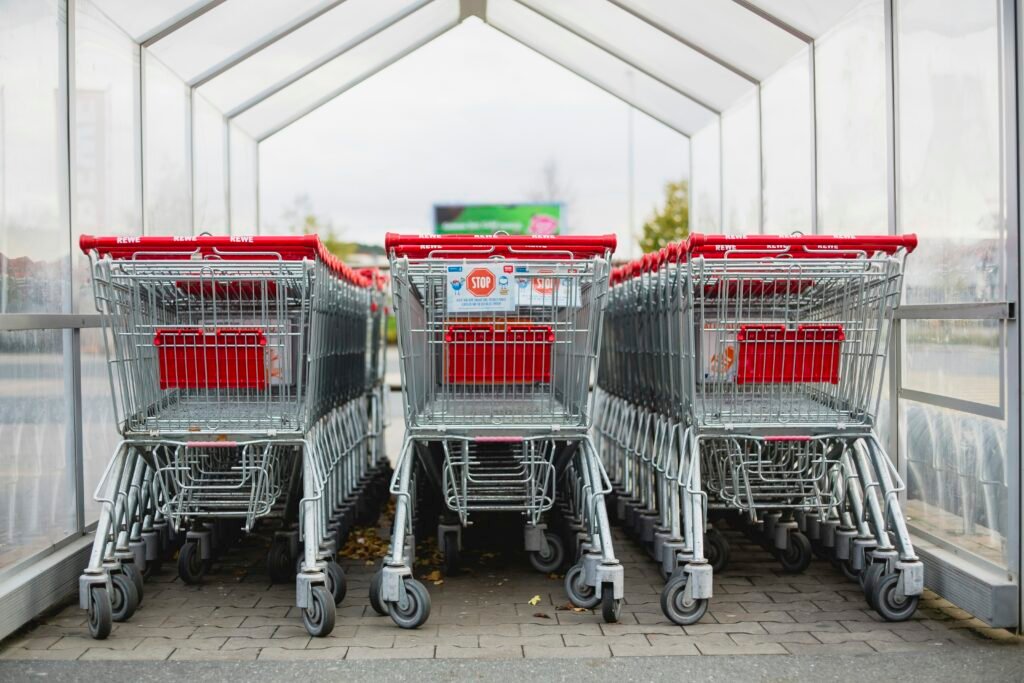
Have you noticed that shopping carts have been growing larger over the years? This isn’t to accommodate larger families—it’s a psychological trick. Marketing research has shown that doubling the size of shopping carts leads customers to buy up to 40% more.
The phenomenon is related to what behavioral economists call “unit bias”—we have a tendency to fill containers, and a half-empty cart feels like we’re not buying enough, even when we have everything we need.
How to outsmart this tactic:
- Use a hand basket for smaller shopping trips
- Choose the smallest cart available if you need a cart
- Be conscious of the empty space in your cart—it’s not asking to be filled
- Stick to your list regardless of how empty your cart looks
If you’re serious about controlling impulse purchases, consider using a set of reusable grocery bags instead of a cart. Their limited capacity naturally restricts how much you can buy.
15. The smell of freshly baked goods might not be so fresh
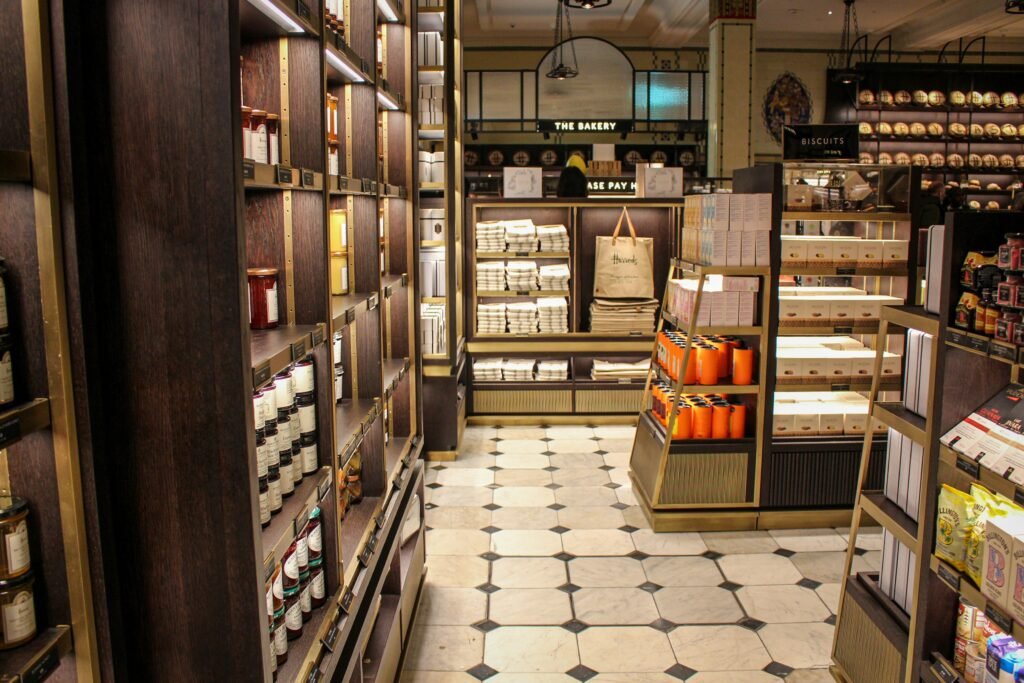
That mouthwatering aroma of freshly baked bread wafting through the store? It might be coming from a can. Many supermarkets use artificial scent marketing—pumping in bakery aromas through their ventilation systems—to stimulate appetite and increase sales.
Scent marketing is incredibly effective; studies show that the smell of baked goods can increase food sales by up to 300%. The bakery section is strategically placed in many stores to maximize the spread of these appetizing aromas, whether natural or artificial.
How to outsmart this tactic:
- Shop on a full stomach to reduce susceptibility to food aromas
- Be aware that scents are designed to trigger impulse purchases
- Stick to your shopping list, especially when passing the bakery
- Consider shopping online for non-perishables to avoid sensory marketing altogether
If you do enjoy fresh-baked goods, consider learning to make them at home instead. A quality bread maker can produce delicious results with minimal effort and save you money in the long run.
Outsmart the Supermarket and Save
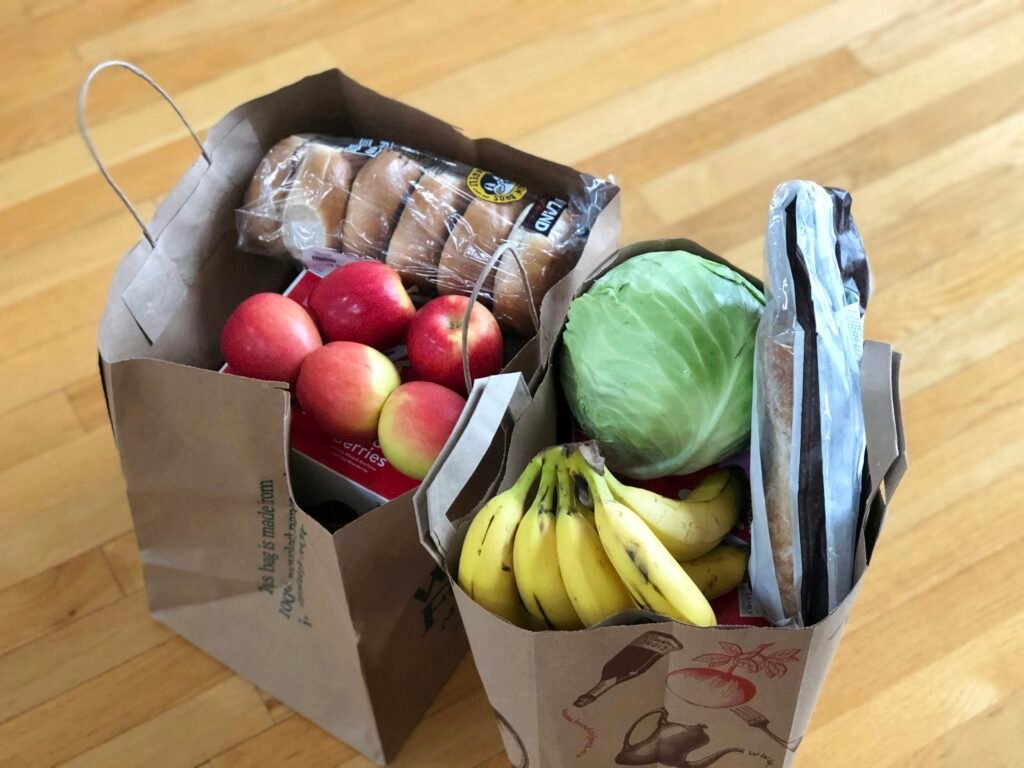
Now that you’re aware of these supermarket shopping secrets, you’re better equipped to navigate the psychological minefield that is your local grocery store. Remember that these tactics aren’t necessarily malicious—they’re just business strategies designed to maximize profits. By understanding them, you can make more conscious choices about what goes into your cart and what stays on the shelf.
The next time you go grocery shopping, try implementing a few of these counter-strategies. You might be surprised at how much you can save simply by being aware of the subtle influences at play. Your grocery bill—and your budget—will thank you.





